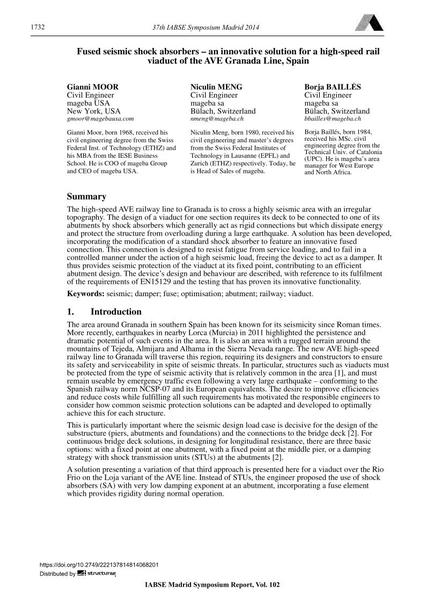Fused seismic shock absorbers – an innovative solution for a high-speed rail viaduct of the AVE Granada Line, Spain

|
|
|||||||||||
Détails bibliographiques
| Auteur(s): |
Gianni Moor
Niculin Meng Borja Baillés |
||||
|---|---|---|---|---|---|
| Médium: | papier de conférence | ||||
| Langue(s): | anglais | ||||
| Conférence: | IABSE Symposium: Engineering for Progress, Nature and People, Madrid, Spain, 3-5 September 2014 | ||||
| Publié dans: | IABSE Symposium Madrid 2014 | ||||
|
|||||
| Page(s): | 1732-1740 | ||||
| Nombre total de pages (du PDF): | 9 | ||||
| Année: | 2014 | ||||
| DOI: | 10.2749/222137814814068201 | ||||
| Abstrait: |
The high-speed AVE railway line to Granada is to cross a highly seismic area with an irregular topography. The design of a viaduct for one section requires its deck to be connected to one of its abutments by shock absorbers which generally act as rigid connections but which dissipate energy and protect the structure from overloading during a large earthquake. A solution has been developed, incorporating the modification of a standard shock absorber to feature an innovative fused connection. This connection is designed to resist fatigue from service loading, and to fail in a controlled manner under the action of a high seismic load, freeing the device to act as a damper. It thus provides seismic protection of the viaduct at its fixed point, contributing to an efficient abutment design. The device’s design and behaviour are described, with reference to its fulfilment of the requirements of EN15129 and the testing that has proven its innovative functionality. |
||||
| Mots-clé: |
viaduc culée amortisseur
|
||||
